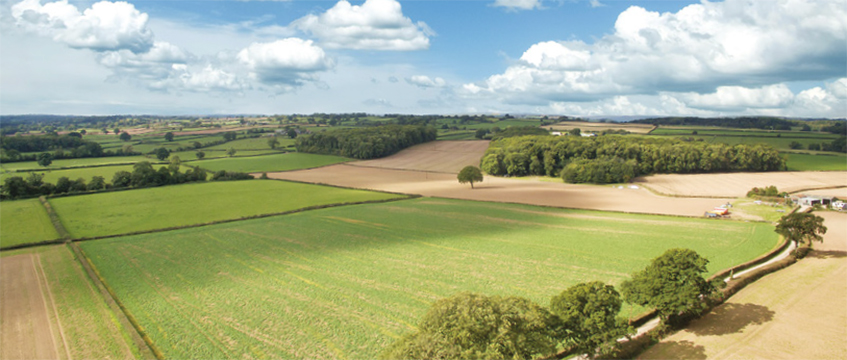Where does the recent rush to buy rural land for rewilding and other purposes leave tenant farmers? Will the new opportunities seen in carbon, rewilding, biodiversity gain and nutrient neutrality be there for tenants, or will they be locked out?
There is no single simple answer to this question. Nevertheless, with rumours abounding of landowners serving notice to terminate tenancies, or warning that they will soon do so in order to capitalise on the new opportunities, tenants are contemplating these developments with unease and worry. Their worries will have been compounded by news last year that the agricultural tenanted sector in England had shrunk slightly for the first time since 1995, the year that the Agricultural Tenancies Act 1995 introduced significant changes to new tenancies. The problems perceived here cannot be addressed as a homogeneous whole. There are too many variations between tenancies, landowners and holdings to do so. But let us consider the larger groupings.
Traditional agricultural tenancies
Traditional tenancies are protected under the Agricultural Holdings Act 1986. Broadly this protects any tenancy granted before 1 September 1995, and succession tenancies to those tenancies. Not all 1986 Act tenancies benefit from succession rights, but for those that do, the original tenancy may enjoy two successions if there are suitably qualified and eligible successors who can apply.
These tenancies enjoy considerable security of tenure. The reasons for termination are very restricted and, in every case, open to challenge.
The threat for these tenants is therefore the economic risk to the farm business from the government’s agricultural transition plan. This is broadly about the removal of traditional subsidies and their replacement with three environmental land management schemes. The most accessible of these, the Sustainable Farming Incentive, should be readily accessible to tenants, but the payments on offer will come nowhere near the payments being replaced.
The other limitation for these tenancies is their narrow focus on the farming business. They are agricultural tenancies granted for the purpose of farming. The legislation which protects them is drafted with this objective to the fore. For example, tenants are bound by rules of good husbandry which were forged in 1947 immediately after the Second World War for a country which had faced and nearly known starvation. These rules are now a barrier to the exploration and development of new opportunities, leaving tenants vulnerable to those landlords who may wish to exploit any departure from the rules to regain possession of a farm.
Farm business tenancies
The new tenancy regime under the 1995 Act tackled the widespread reluctance of landowners to let land by removing any security of tenure beyond an agreed term, liberating rents from restrictive statutory review clauses and providing more flexibility in the uses of a let farm in order to accommodate farm business diversification into other activities. Terms have tended to be short, five years or less in many cases, although this can disguise the reality that tenancies are often allowed to roll over from year to year – an arrangement which is accommodated by the Act then allowing one year’s notice to quit on a term date at any time after the end of a fixed term.
These are the tenancies which are most threatened by the emerging new opportunities. This is the land where owners are hedging their bets by recovering possession, or warning that they may do so in the near future. To some onlookers this will seem high-handed; to others it will seem entirely rational. Some tenants will see the loss of their rented land as no more than a part of the bargain – and risk – they took on when they signed the tenancy agreement; others will be aggrieved not only by the loss of their land but also by the reasons for it and their exclusion from new opportunities.
Looking ahead
Land will continue to need management, whatever individual areas are used for in the future. The Knepp Estate in West Sussex is well known for its wide-scale rewilding, and it may not always be appreciated that the land at Knepp is still managed – grazing livestock are managed, their welfare is overseen, pests and invasive species are controlled and natural harvests are taken. The skills required to undertake this work are by and large traditional agricultural skills. Many landlords do not have the time, inclination or knowledge and skill to undertake this work. Some activities will require other skills of course.
Is there a role here for tenant farmers? And, if so, is a tenancy agreement the right vehicle for this role? There undoubtedly is a role for farmers who adapt to the new opportunities and requirements. It is far more doubtful, however, whether agricultural tenancy agreements as we know them now or as they might be adapted are the right instruments for the future.
But what of the continuing role of tenant farmers in food production? Domestic agricultural production has been underpinned by the Common Agricultural Policy to the extent that the profit for many farmers has more or less equated to their basic subsidy receipts. Withdraw the subsidy and no more profit. This affects all farmers, not just tenants, but tenants will be particularly vulnerable because they will need to continue paying rent and because some of the more ambitious government schemes (and other opportunities) are going to be far harder for them to join.
Expect downward rent pressures and continuing shrinkage while we find new ways to work and new types of agreement for the management of rural land. But also expect a clearer separation of the best from the rest and wider-ranging opportunities for landowners and tenants who are willing to work imaginatively and creatively together.
Charles Cowap is a rural practice chartered surveyor








